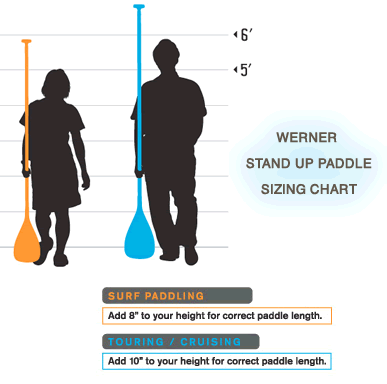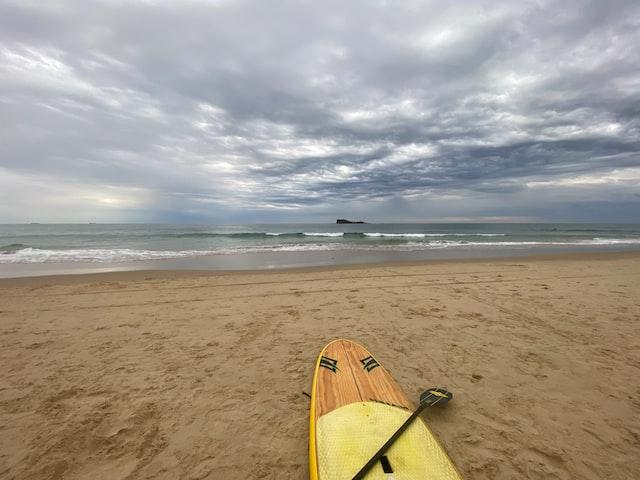Choosing the right standup paddleboard paddle is the next most important decision you will make after you decide what type of standup paddleboard to buy. In some ways, this is even more important than choosing the right kayak paddle since when paddling a paddleboard the rider is so much higher off the surface of the water. Choosing the right SUP paddle is a decision that will ultimately affect the paddling efficiency of the paddler, the paddle, and even the board.
Identify What Type of Standup Paddleboarding
The SUP paddle design considerations differ for each type of standup paddleboarding. So, knowing how you will be using the paddleboard will help inform your decision when choosing a SUP paddle. For instance, due to the stance on the board when surfing waves, surfing SUP paddles tend to be a little shorter than those used when flatwater paddling or racing. The blade shape and angle also vary from type of paddleboarding to type of paddleboarding. So the first thing to do is to identify what type of paddling boarding you will mainly be doing and then look at blades in that category of paddleboarding.
Choosing the Components of a SUP Paddle
Before choosing a SUP paddle the paddler must first have a working knowledge of the anatomy of a SUP paddle. Like a canoe paddle, a SUP paddle is made up of three main parts. There is a blade, a shaft, and a handle. Of course, there are other design features of a SUP paddle that the paddler should be aware of as well as how each of these components affects the ergonomics of the paddler as well as the efficiency of the paddle stroke.
The handle of a SUP paddle is a matter of personal preference. The only way to choose the type of handle on a SUP paddle is to actually hold the paddle and to see what feels good in the hand and to actually take strokes with the paddle to experience handle when pressure is actually on it.
The same thing goes for the shape and contour of the blade. To understand what the different design features of the blade actually do the paddle should be tried out. In general, a concave blade helps to reduce paddle wander.
Choosing the Materials
As with paddles in other paddlesports, SUP paddles are made from a variety of materials to meet both price and performance concerns. The least expensive paddles have aluminum shafts and plastic blades and handles. These are by far the most durable types of SUP paddles out there and are viewed as beginner paddles. They also make great spare paddles or second paddles when teaching friends to SUP.
The next materials on the list of those used in the construction of SUP paddles are fiberglass and carbon fiber. These are both lighter than plastic with carbon fiber being the lightest and most expensive of the bunch. Besides the weight benefit that composite paddles offer they also allow for a much higher degree of performance in the water. You can actually feel the difference of a carbon fiber paddle blade in the water over a plastic blade.
When choosing a material for your paddle it is important to realize that they often use different materials in the makeup of each part of the SUP paddle. For instance, a “fiberglass” SUP paddle might only be referring to a fiberglass shaft. The blade itself very well could still be plastic. There is nothing wrong with that, it is just something to be aware of.
Choosing the Height of the Paddle
Perhaps the most common question that beginners have with regard to choosing a SUP paddle is how long should the paddle be. There are differing opinions on this actually. The best way to size a paddle is to stand up next to it with the blade touching the ground. The handle should be anywhere from 4” to 12” above your head. On average about 8” above the paddler’s head is preferred. Surfers can get away with a shorter paddle while racers generally want a longer one. The thickness of the board will also play a role in how long the paddle should be.

Summary
In the end, choosing the SUP paddle is going to be a personal choice. The design features, materials, and even the length will come down to a variety of factors such as the skill level of the paddler, the type of paddleboarding, and even the board being paddled. The best thing to do when learning to paddleboard is to try out a bunch of different SUP paddles so you can make the best decision for your own paddleboarding style.

